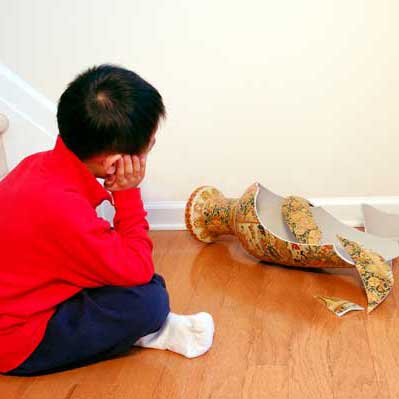When you hear a child crying, what is your first reaction?
If it’s a child you know, you might have an impulse to rush to their aid and fix the problem for them ASAP. If you can’t do that, you may feel the need to do something to at least distract them or cheer them up.
If you follow our blog or have taken our classes, you have probably heard about our technique for facilitating tantrums. In a nutshell, it involves first allowing the child to completely express their feelings in a safe manner that is within your boundaries, and then following up with Success Training wherein you reinforce that the child knew exactly what they needed to feel better, and did it. Success!
The same basic premise applies to children who are crying out of sadness. Often when a child cries, adults immediately try to figure out what they can do to cheer them up or at least get them to stop crying as quickly as possible.
It makes sense. Crying is one of the few ways infants have of indicating that something is wrong. It is a signal to the caretaker that something needs fixing, and when the problem is fixed, the crying usually stops shortly thereafter. We are biologically wired to find crying distressing so we react with urgency to keep children safe!
But as children grow, the purpose of crying broadens. Crying is a natural coping mechanism; it is our brain’s (and body’s) way of releasing tension and sorrow and adapting to things we don’t like. (The Science Behind Sobbing)
You’ve probably experienced the catharsis that comes as a result of a nice, long cry. Sometimes people even intentionally seek out sad books or movies because they “just need a good cry.”
The same is true for kids! Crying is how they handle disappointment, frustration, fear, and many other emotions. Stepping in to stop it cuts this process short and inadvertently teaches kids suppression.
What I do instead is respect the child’s emotional expression. Much like facilitating a tantrum, I allow the child to experience their feelings and express them in a way that fits within my boundaries (no breaking things, no hurting self or others, etc.). As I described it to one parent while holding a sobbing toddler in my arms, “I see my job as that of offering support, not fixing a problem for them.” Crying is not a problem; it helps the child adapt.
When we step in to prevent or fix every problem our children encounter (including tears, if we see those as a problem), we are sending the message that we don’t have faith in their ability to handle it themselves.
I’m not saying that you should never help your child or offer emotional comfort. What I’m talking about is the knee-jerk reaction to tears that results in a desperate attempt to do whatever is necessary to end them, including things you swore you’d never do. If hearing your child cry sends you into an instant panic, you might want to stop and look at why it freaks you out so much.
When I examined my own stressed-out reaction to the tears of any child in my care, I found that it was rooted in a family belief that you should always be happy. In theory, this is a great life philosophy. Unfortunately, the flip side is that if you’re unhappy, something must be wrong. As a kid, this translated into the simplified collapse of “not happy = wrong.”
So therefore, I had two choices in life: be happy or be wrong. I don’t like to be wrong, so that left me with only one choice. Luckily, a few years ago I realized I had the two collapsed, and I was able to see that they were actually different. Once you have distinguished two concepts as separate, they start to appear that way in your life.
So now, when I’m babysitting for a family and the child starts to cry, I don’t panic. I simply use our SAY WHAT YOU SEE® method to facilitate the tears. It often sounds something like this:
Child: (crying)
SWYS: “You’re upset. You didn’t want your parents to leave, and they did. You wish they would stay home and that I would leave!”
Child: (nods, crying still)
SWYS: “You’re sad that your parents are gone…”
STRENGTH: “…Crying helps. You know exactly what you need to do to help yourself feel better.”
You can usually tell from body language whether or not the child wants physical comfort. If I can’t tell, I just make a statement like, “If you need a hug, I’m right here,” or I offer my hand and watch their reaction. Sometimes the child wants to be alone. If that’s the case and the child is old enough to be left on their own, I let them know where I will be or what I will be doing, and tell them that they can come get me whenever they are ready.
When the child has finished crying, I do more Success Training:
SWYS: “You cried for as long as you needed, and now you’re ready to play!”
STRENGTH: “You know just what to do to comfort yourself.”
Allowing children to express their sorrow in a safe environment teaches them that their natural reaction (crying) is healthy and acceptable. Being there to offer support, but not fix it for them, teaches them that they can handle upsets and disappointments on their own, and empowers them for the future.
Imagine a world where everyone feels safe to express their emotions instead of ashamed or worried. Together, we can make it a reality in just one generation!











